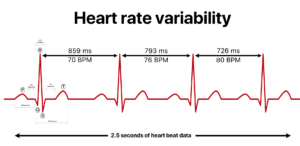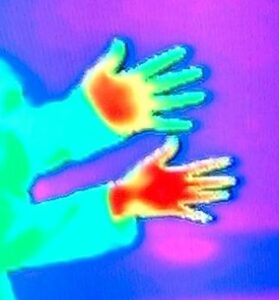Grounding and Earthing Benefits: Does Walking Barefoot Reduce Inflammation?
Have you ever kicked off your shoes and felt the cool grass beneath your feet? That simple pleasure might be doing more for your health than you think. Walking barefoot on natural surfaces—a practice called grounding or earthing—isn’t just relaxing. It may actually reduce inflammation in your body.
You’re probably wondering if this sounds too good to be true. After all, can something as simple as walking barefoot really impact your health? The research suggests it can, and the science behind it is fascinating.
What Is Grounding and How Does It Work?

Grounding means making direct contact with Earth’s surface. You can do this by walking barefoot outside or using special indoor products like grounding mats. Think of it as plugging yourself into nature’s power source.
Here’s what happens when you ground yourself. Research from the National Institutes of Health shows that Earth carries a negative electrical charge. When your bare skin touches the ground, electrons flow into your body.
These electrons act like natural antioxidants. They help neutralize free radicals (unstable molecules that damage your cells). This process may explain why grounding reduces inflammation throughout your body.
The Science Behind Earth’s Healing Electrons
Your body runs on electricity—every heartbeat and thought involves electrical signals. But modern life disconnects you from Earth’s electrical field. You wear rubber-soled shoes, sleep in elevated beds, and spend hours indoors on insulated floors.
This matters because scientists have discovered that this disconnection may contribute to chronic inflammation. When you reconnect through grounding, electrons spread throughout your body via your connective tissue network.
Does Walking Barefoot Reduce Inflammation?

Yes, research strongly suggests it does. But let’s look at the actual evidence so you can understand what’s happening in your body.
A groundbreaking study published in the Journal of Inflammation Research found that grounding reduces the five classic signs of inflammation: redness, heat, swelling, pain, and loss of function. The researchers used medical thermal imaging to document these changes.
Real Results From Clinical Studies
In one remarkable case, an 84-year-old woman with diabetes had a wound that wouldn’t heal for eight months. After just two weeks of daily 30-minute grounding sessions, her wound completely healed. The researchers photographed the dramatic improvement week by week.
Another study looked at people doing intense exercise. The ones who grounded themselves after working out had less muscle soreness and faster recovery. Their blood tests showed fewer inflammatory markers compared to the ungrounded group.
So how does this connect to your daily life? If you deal with joint pain, old injuries, or conditions like arthritis, grounding might offer natural relief. The anti-inflammatory effects work throughout your entire body, not just where your feet touch the ground.
How Grounding Fights Inflammation at the Cellular Level
Here’s what happens inside your body when you walk barefoot. Your immune system releases molecules called reactive oxygen species (ROS) when fighting infections or healing injuries. These molecules help destroy harmful bacteria and damaged tissue.
But ROS can also harm healthy cells nearby—doctors call this “collateral damage.” Research shows that electrons from Earth create a protective shield around injury sites. This shield limits the damage to healthy tissue while still allowing healing to occur.
How Grounding Reduces Inflammation: Step-by-Step
Grounding and Earthing Benefits Beyond Inflammation
Walking barefoot does more than just reduce inflammation. Research has uncovered several other grounding and earthing benefits that might surprise you.
Better Sleep Quality
Do you toss and turn at night? Grounding might help. A study in the Journal of Alternative and Complementary Medicine tracked 12 people with sleep problems for eight weeks. They slept on grounding mats every night.
The results were impressive. Their cortisol levels (your body’s main stress hormone) normalized. They fell asleep faster, woke up less often, and reported feeling more refreshed in the morning. Most people noticed improvements within the first week.
Pain Relief Without Medication
Chronic pain affects millions of people every day. Massage therapists—who experience constant physical strain—participated in a randomized controlled trial on grounding. After just one week of using grounding mats while working and sleeping, they reported significantly less pain, stress, and fatigue.
The good news is that these benefits lasted even after the study ended. Your body seems to maintain the positive changes once it reconnects with Earth’s electrical field.
Improved Heart Health

Your cardiovascular system benefits from grounding too. Studies show that grounding reduces blood viscosity (thickness). Thicker blood increases your risk of heart disease and stroke. When people ground themselves, their blood cells flow more easily through vessels.
Plus, grounding improves heart rate variability (HRV)—the variation between your heartbeats. Higher HRV generally means better heart health and stress resilience. Athletes use HRV to track their recovery and performance.
Earthing at Night: Why Sleep Is Prime Time for Grounding

You might be thinking, “When’s the best time to practice grounding?” The answer is: while you sleep. Here’s why earthing at night offers unique advantages.
Your body does most of its healing and repair work during sleep. Hormones that fight inflammation and repair tissues peak overnight. So grounding during these crucial hours gives your body extra support when it needs it most.
How Earthing at Night Improves Your Sleep Cycle
A recent randomized study tested earthing mats specifically for sleep. Sixty people used either real grounding mats or fake ones for six hours each night. After just one month, the grounded group showed remarkable improvements.
They slept longer each night. They fell asleep faster. They woke up less often. Even a week after stopping the grounding mats, their sleep quality remained better than before the study.
But there’s more to it than just sleep duration. Grounding at night helps your cortisol rhythm sync with Earth’s natural day-night cycle. Cortisol should be lowest at bedtime and highest in the morning. Many people have this backward, which disrupts their sleep.
Setting Up Your Bedroom for Earthing at Night
You don’t need to sleep outside to get grounding benefits at night. Indoor grounding products work just as well. Here’s what you need to know.
| Grounding Product | How It Works | Best For |
|---|---|---|
| Grounding Sheets | Replace your regular sheets with ones containing conductive silver or carbon fibers | People who want maximum skin contact all night |
| Mattress Pads | Place under your fitted sheet—works through one thin layer of fabric | Those who prefer their own sheets or have sensitive skin |
| Pillowcases | Grounding through head and upper body contact | Good starting option or addition to other products |
| Grounding Patches | Small adhesive pads you stick on specific body areas | Targeting particular pain points like sore joints |
All these products connect to your home’s electrical grounding system via a cord. Make sure to use an outlet tester to verify your outlets are properly grounded before plugging in any grounding equipment.
How to Practice Grounding: Simple Methods Anyone Can Use
Ready to try grounding for yourself? You don’t need special equipment or training. Let’s start with the basics.
Outdoor Grounding Techniques
The simplest way to ground yourself is to walk barefoot outside. But not all surfaces work the same way. Here’s what you need to know.
Best Surfaces for Grounding:
- Grass – Perfect for beginners, soft and comfortable
- Sand – Excellent at the beach, large contact area
- Soil or dirt – Works great in your garden or park
- Concrete – Surprising but true, unsealed concrete conducts electricity
- Rock or stone – Natural surfaces that conduct well
Surfaces That DON’T Work:
- Asphalt (blocks the connection)
- Wood decks (insulates you from Earth)
- Vinyl or sealed surfaces
- Indoor floors (unless using grounding products)
Start with just 20-30 minutes a day. That’s enough time for electrons to circulate through your entire bloodstream. You can walk, stand, sit, or even lie down—as long as your bare skin touches the ground.
Indoor Grounding for Modern Life
Most of us can’t spend hours outside barefoot every day. That’s where indoor grounding products come in handy. They let you ground while working, relaxing, or sleeping.
Grounding mats are the most popular option. You place them under your feet at your desk or under your hands while using your computer. They plug into the grounding port of any standard electrical outlet.
The best part? You can practice earthing at night for 7-9 hours straight without any effort. Just sleep on a grounding sheet or mat, and your body does the rest.
Making Grounding Part of Your Daily Routine
Here’s how to build grounding into your life without making it complicated:
- Morning routine: Start your day with a 10-minute barefoot walk in your yard while having coffee
- Work breaks: Use a grounding mat under your desk to stay connected during work hours
- Exercise recovery: Walk barefoot after workouts to speed up muscle recovery
- Evening wind-down: Spend 20 minutes grounded before bed to improve sleep
- Sleep optimization: Use earthing at night with grounding sheets for continuous benefits
The key is consistency, not perfection. Even small amounts of grounding seem to help. You’re essentially building a lifestyle habit that supports your body’s natural healing processes.
What Does the Research Really Say About Grounding?
Let’s be honest about the science. Grounding research shows promising results, but most studies have been small. That means we need to look at the evidence carefully.
A comprehensive review examined about 20 published studies on grounding. The researchers found consistent benefits across multiple areas: reduced inflammation, better sleep, less pain, faster wound healing, and improved blood flow.

What makes these findings credible? The studies used objective measurements—not just people’s opinions. They measured blood markers, used thermal imaging, tracked sleep with devices, and monitored heart rate variability. These are real, measurable changes in your body.
Understanding the Limitations
However, scientists point out some important limitations. Most studies included 10-60 participants, which is considered small. Larger studies with hundreds of people would strengthen the evidence.
Also, more research is needed to fully understand how grounding works. The electron transfer theory makes sense based on what we know about physics and biology. But there’s still more to discover about the exact mechanisms.
The good news? Grounding has no reported side effects in any study. It costs nothing if you practice outdoors. And even if future research shows the benefits are partly placebo, you’re still getting the proven advantages of spending time in nature.
Combining Grounding With Other Wellness Practices
Grounding works best as part of a bigger health strategy. Think of it as one tool in your wellness toolkit, not a magic cure-all.
For example, morning sunlight exposure plus barefoot grounding creates a powerful combination. Both help regulate your circadian rhythm (your body’s internal clock). Try a barefoot morning walk to get both benefits at once.
Grounding and Anti-Inflammatory Nutrition
Your diet influences inflammation just as much as grounding does. Foods rich in omega-3 fatty acids, colorful vegetables, and antioxidants work synergistically with earthing.
Think of it this way: grounding provides electrons that fight inflammation from the outside. Anti-inflammatory foods provide nutrients that fight it from the inside. Together, they’re more effective than either approach alone.
Exercise Recovery and Grounding
Athletes are discovering grounding’s benefits for recovery. After intense workouts, your muscles experience microscopic damage and inflammation. This is normal—it’s how you get stronger.
But grounding after exercise may speed up this recovery process. The electrons help reduce excess inflammation while still allowing the beneficial adaptive response. Several pro athletes now incorporate grounding into their recovery routines.
Common Questions About Grounding and Earthing Benefits
How Long Before You Notice Results?
This varies from person to person. Some people feel more relaxed within minutes of grounding. Others notice improved sleep within a few days.
For inflammation and pain relief, research suggests you’ll see the most noticeable changes after 1-4 weeks of consistent practice. Think of it like starting an exercise program—you won’t see results after one workout, but consistency pays off.
Can You Ground Too Much?
No studies have found any negative effects from extended grounding. Remember, humans spent thousands of years in constant contact with Earth. Your body evolved expecting this connection.
That said, start gradually if you’re new to grounding. Some people report feeling unusual sensations as their body adjusts. These typically disappear within a few days.
Does Grounding Work Through Socks or Shoes?
Regular socks and shoes block the connection—they’re made from insulating materials. You need direct skin contact or special conductive products.
Some companies make grounding shoes with leather soles instead of rubber. These provide some conductivity, though not as much as bare feet. Grounding socks work only with indoor grounding systems, not by themselves outdoors.
What About People Who Can’t Walk Barefoot Outside?
Don’t worry—indoor grounding products work just as well. In fact, most studies used grounding mats and sheets, not outdoor barefoot walking. This makes grounding accessible to everyone regardless of weather, mobility, or living situation.
The Bigger Picture: Reconnecting With Nature
Beyond the physical benefits, grounding represents something important in our modern world. We’ve spent the last 50-70 years increasingly disconnected from nature.
Think about it. Your grandparents probably spent more time outside, wore leather-soled shoes, and lived closer to the earth. Today, we work in insulated buildings, wear synthetic shoes, and sleep on elevated beds.
This disconnection might contribute to the rise in inflammatory diseases, sleep problems, and chronic stress. While grounding isn’t a cure-all, it’s one simple way to restore a lost connection.
Plus, even if the electrical effects are minimal, spending time barefoot outdoors comes with other benefits. You’re moving your body, getting fresh air, and taking a break from screens. All of these support your overall wellness.
Getting Started With Grounding Today
Ready to try grounding for yourself? Here’s your simple action plan to get started this week.
Start small. Don’t overwhelm yourself trying to ground for hours every day. Just 10-20 minutes is enough to begin experiencing benefits. You can always increase the time as grounding becomes part of your routine.
Choose one method that fits your lifestyle. If you have a yard, try morning barefoot walks. If you’re stuck indoors, consider a grounding mat for your workspace. For earthing at night, a grounding sheet might be your best option.
Track how you feel over the next few weeks. Notice your sleep quality, energy levels, and any changes in pain or stiffness. This helps you understand whether grounding is helping your specific situation.
The beauty of grounding is its simplicity. No complicated protocols, no expensive equipment required, and no side effects to worry about. You’re just reconnecting with something humans have done naturally for thousands of years.
So take off your shoes, step outside, and feel the earth beneath your feet. Your body might thank you for it.
References
- Chevalier G, Sinatra ST, Oschman JL, et al. Earthing: Health Implications of Reconnecting the Human Body to the Earth’s Surface Electrons. Journal of Environmental and Public Health. 2012.
- Oschman JL, Chevalier G, Brown R. The effects of grounding (earthing) on inflammation, the immune response, wound healing, and prevention and treatment of chronic inflammatory and autoimmune diseases. Journal of Inflammation Research. 2015.
- Sinatra ST, Oschman JL, Chevalier G, Sinatra D. Grounding – The universal anti-inflammatory remedy. Biomedicine and Pharmacotherapy. 2023.
- Ghaly M, Teplitz D. The biologic effects of grounding the human body during sleep as measured by cortisol levels and subjective reporting of sleep, pain, and stress. Journal of Alternative and Complementary Medicine. 2004.
- Chevalier G, Patel S, Weiss L, et al. The Effects of Grounding (Earthing) on Bodyworkers’ Pain and Overall Quality of Life: A Randomized Controlled Trial. Explore. 2019.
- Menigoz W, Latz TT, Ely RA, et al. Integrative and lifestyle medicine strategies should include Earthing (grounding): Review of research evidence and clinical observations. Explore. 2020.
- Lee J, Kim MS, Jeon JY, et al. A randomized, double-blind, placebo-controlled study on the improvement of sleep quality with Earthing mat. Journal of Clinical Sleep Medicine. 2025.
- Oschman JL, Chevalier G, Ober AC. Electric Nutrition: The Surprising Health and Healing Benefits of Biological Grounding (Earthing). Alternative Therapies in Health and Medicine. 2017.
Related Articles
- Lifestyle Foundations for Optimal Wellness: Proven Habits That Transform Health and Longevity
- Recommended Dose of Turmeric for Inflammation: How It Compares to Ibuprofen
- How Many Hours of Deep Sleep Do You Need for Optimal Recovery
- Post-Meal Walks & Resistance Training: A Simple Insulin-Sensitivity Stack
About the Author
The Remedy Verified Team translates complex metabolic science into clear, practical strategies for everyday health.
Medical Disclaimer
This article is for informational purposes only and does not constitute medical advice. The information contained herein is not a substitute for professional medical advice, diagnosis, or treatment. Always seek the advice of your physician or other qualified health provider with any questions you may have regarding a medical condition. Never disregard professional medical advice or delay in seeking it because of something you have read in this article. If you have a medical emergency, call your doctor or 911 immediately. The Remedy Verified Team does not recommend or endorse any specific tests, physicians, products, procedures, opinions, or other information that may be mentioned in this article. Reliance on any information provided by this article is solely at your own risk.



